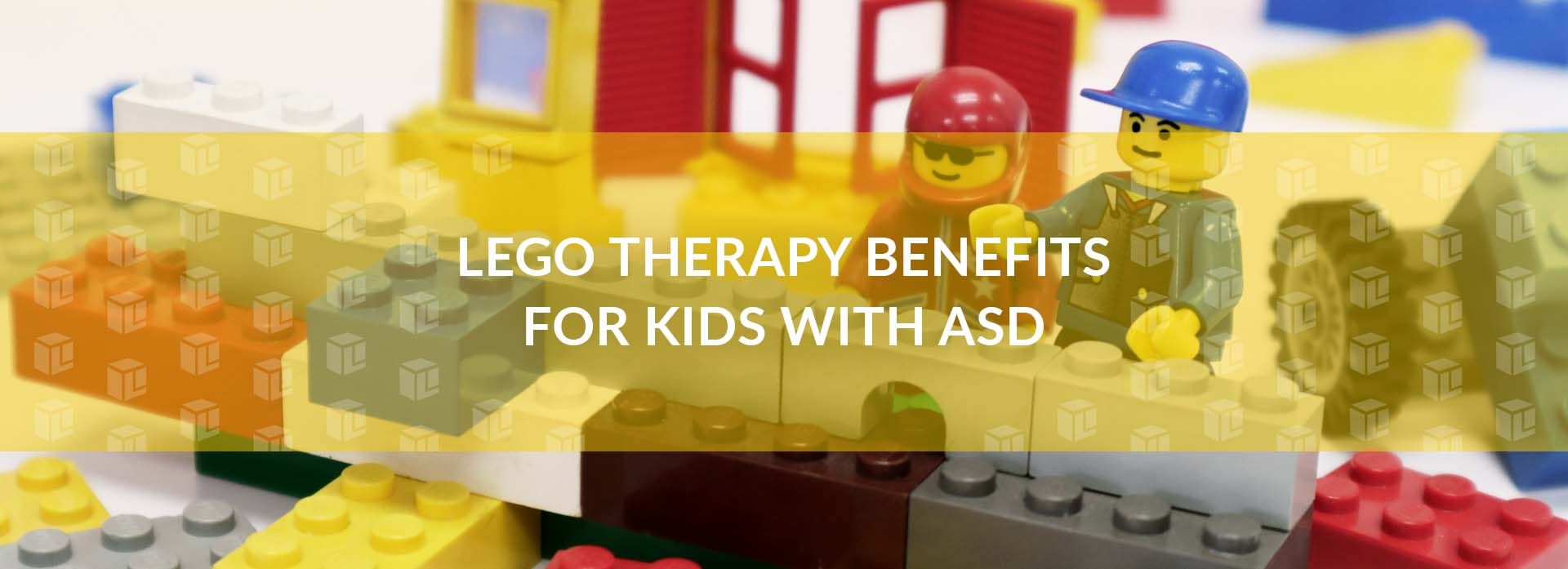LEGO Therapy Benefits For Kids With ASD
Millions of kids have discovered the joys of LEGO® products and will spend some time in the next few days erecting LEGO creations. It’s a universally beloved toy, simple in its most basic form and yet can be used to make massive, complex structures and dioramas. LEGO sets are a particularly useful tool and play item for kids on the autism spectrum. LEGO therapy benefits range from improved social skills, concentration and attention adjustments and even enriched motor skill function. Most therapy programs that work with children on the spectrum incorporate LEGO products into their curriculum. While parents and family members might be used to seeing LEGO products in the classroom and in therapy centers, not everyone knows why they are so beneficial. Lexington uses LEGO bricks in some of our programs and here are the reasons why pretty much everyone that works with kids on the spectrum uses these implements to help kids grow.
Social Skill Expansion
One of the many LEGO therapy benefits is an opportunity to grow socially. Depending on how the program is implemented, there is either opportunity for casual interaction through LEGO free-play or a designed approach in which each participant is given a role in the construction of a particular set. These roles are assumed and then traded while the construction happens, giving every participant a chance to try something new or to fill the role they prefer. Either way, LEGO bricks are simply a conduit to increase social interaction during floor time.
Creativity Explored
While there is a formulaic approach to the construction of standard LEGO sets, it’s not uncommon for architects of the LEGO structure to make their own creative changes or even to create their own structure purely from imagination. It’s an opportunity to explore and test the boundaries while remaining within the formulaic boundaries of brick on brick. This is another one of the LEGO therapy benefits of the little colored bricks. An environment is created in which boundaries can be tested safely.
Motor Skill Adjustment
The LEGO therapy benefits are multi-faceted, but their use in therapeutic interventions was first studied and implemented as a way to improve fine motor skills and hand strength while helping improve spatial, visual and analytical skills around 2003. The original model for LEGO therapy was implemented as a social skills program with added motor adjustments. Now the program uses many of the base ideas from its original implementation, but there are many books and many different approaches with the aim of helping kids see the benefits from LEGO therapy. As kids attach block to block and arrange different sized pieces into structures and vehicles, they don’t realize that they are expanding their motor skills more and more with each block placed. Many of the best therapeutic interventions happen without a strenuous impact or even the member being aware that this play time is actually impacting their skills.
Goal Oriented Tasks
One of the LEGO therapy benefits that’s immediately obvious is the implementation of goal oriented tasks into play-based learning. While there are many ways to use LEGO pieces for therapy, the traditional method involves the assignment of 4 roles to each participant in order to complete a LEGO task.
- An Engineer, who reads and dictates the instructions
- A Supplier, who collects the various bricks needed from different piles
- A Builder, who listens to the instructions and uses the supplies to build the model.
Finally, a role should be assigned to the adult or guardian implementing this therapy.
- A Foreman, who make sure that everyone is working as a team
Each participant takes a turn in each role, so everyone has a chance to try different things. Each role also has a task-oriented goal that supports the overall goal to complete the project. The breakdown of the project into individual roles helps kids to develop goals in a social and task-based setting.
Overall, a simple collection of blocks can become something amazing with a little dedication, but it’s truly fascinating to see how these simple tasks can help kids grow and develop. Lexington members come into contact with LEGO pieces in varying capacities, but they’re always a tool that we can use to help our members grow. Would you like to know more? Send an email to info@lexingtonservi.wpengine.com and let us show you the LEGO therapy benefits.

